
Delicious and versatile, muffins are miniature – and sweeter – versions of quick-bread. Typically made in a muffin tin with fruits or grains mixed in, most muffin recipes follow a very standard formula. The type of flour you use will affect the muffins’ density, giving you the freedom to create fluffy or hearty muffins, depending on your mood.
Keep It Simple
All-purpose flour, whether bleached or unbleached, is the most versatile type of flour used in baking, and is the go-to for every skill level of home chef. Unbleached all-purpose flour contains nutrients that are removed from and then added back to bleached all-purpose flour. Both types of all-purpose flour are standard in muffins.
Make Hearty Muffins
For denser muffins, use whole wheat flour. Unlike all-purpose flour, the whole wheat version contains the entire wheat kernel. This means that you will taste natural wheat flavors when you use this flour in your baked goods. Its coarser texture makes for a heavier muffin that is a favorite in colder months. Pair this flour with fruits such as cranberries or blueberries to help break up the density with a lighter texture. Likewise, avoid the use of other grains, such as oats, in your muffins when using whole wheat flour.
Sugary Sweet and Fluffy Muffins
Finely-milled cake flour is soft and light. The structure of cake flour is changed during its bleaching process, making this flour more acidic than others. The elevated levels of acidity gives baked goods a lift. If your muffin recipe calls for a great deal of sugar, cake flour is a nice complement. It counteracts a recipe’s elevated sugar content by giving the muffins form and structure, finishing with a fluffy, cakey density.
Modifying With Alternative Flours
If you or your family is on a special diet, other wheat-free flours may be used to make muffins. Coconut flour and almond flour are great alternatives to wheat flour for people on low-carb or gluten-free diets. Coconut flour is far denser than traditional flour, so take that into consideration when making muffins. Use agave nectar in place of dry sugar to keep coconut flour muffins light and moist. However, almond flour gives recipes a cakey texture all on its own, making it perfect for a moderately dense muffin.
Related Articles

What Does Cornstarch Do in Baking ...
Does Cake Flour Contain Baking Soda & ...

Can You Use Konjac Flour in Baking?
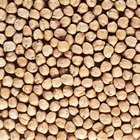
How to Roast Chickpea Flour
Baking With Almond, Rice & Coconut Flour
Can I Grind Quinoa?
How Many Calories are in Pistachio ...
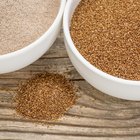
Is Teff Flour Gluten-Free?
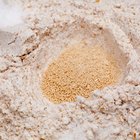
Healthy Cake Mix Substitute
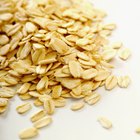
Baking With Oats Instead of Flour
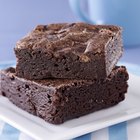
How to Replace Ingredients to Make ...
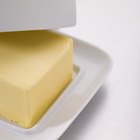
How to Keep Crumbs From Melting on a ...
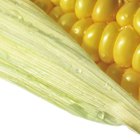
How to Substitute Light Corn Syrup in a ...
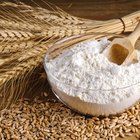
Differences Between Bleached Flour & ...
Flour Substitute for Muffins

Bread Flour vs. Cake Flour in Sponge ...
Easy Strawberry Cake Recipe
What Is the Difference Between Cake ...

Can You Make a Pumpkin Roll With a Cake ...
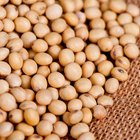
Is Soy Flour Healthy?
References
Resources
Writer Bio
Meg Winkler began professionally writing in 2008. She has covered a variety of topics including fine wine, interiors, the arts, lifestyle and history. Winkler has been a luxury publications editor and music critic. She is an independent author and holds a Master of Arts from American Military University.
Photo Credits
Ablestock.com/AbleStock.com/Getty Images